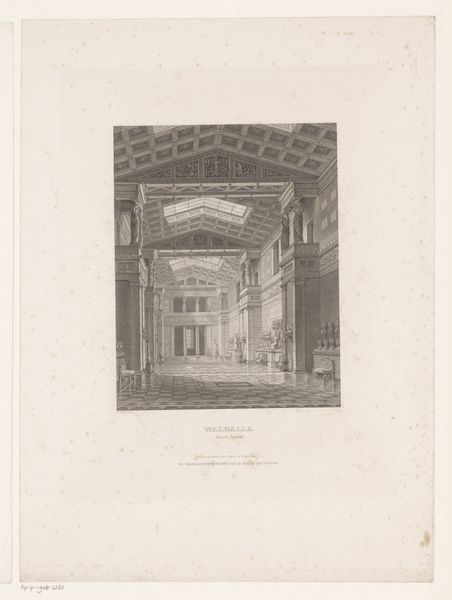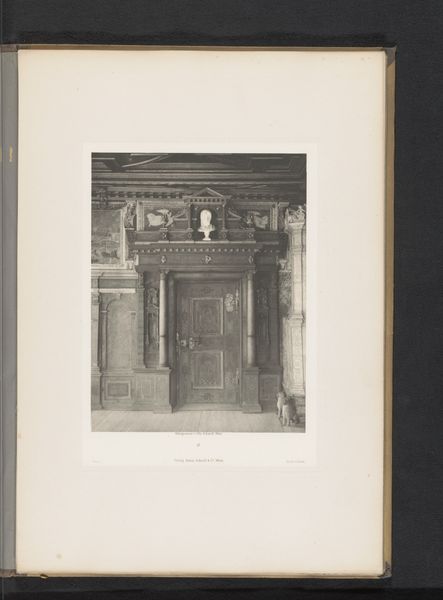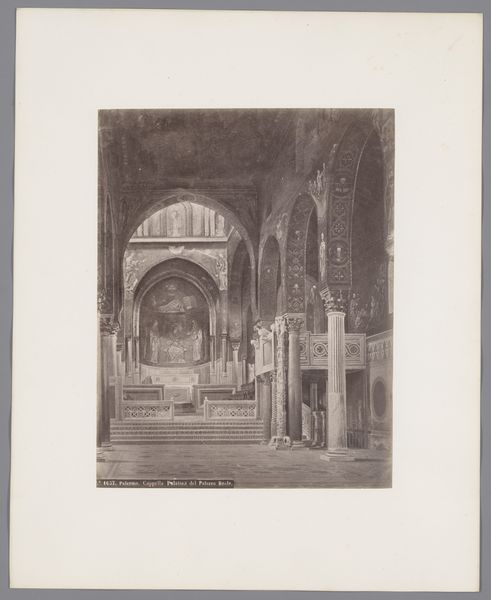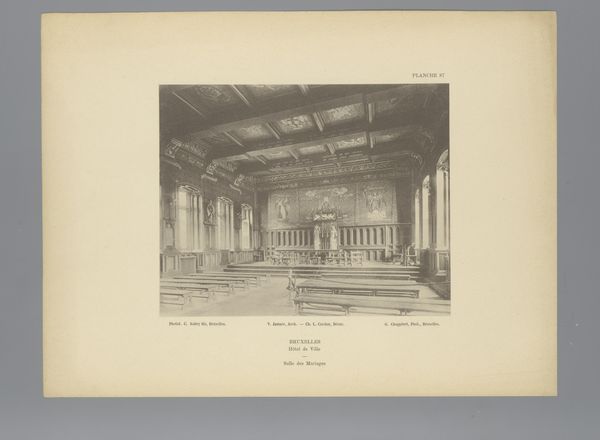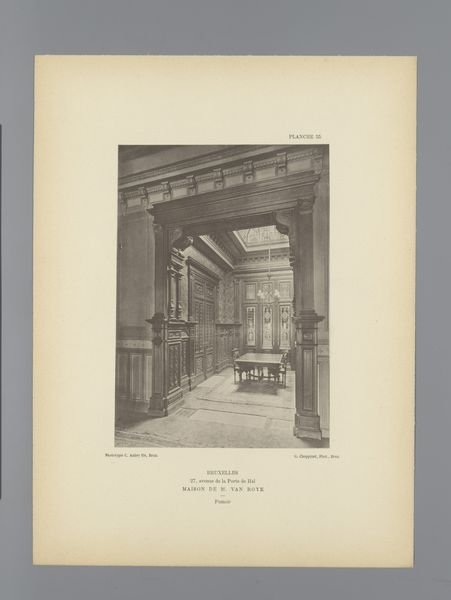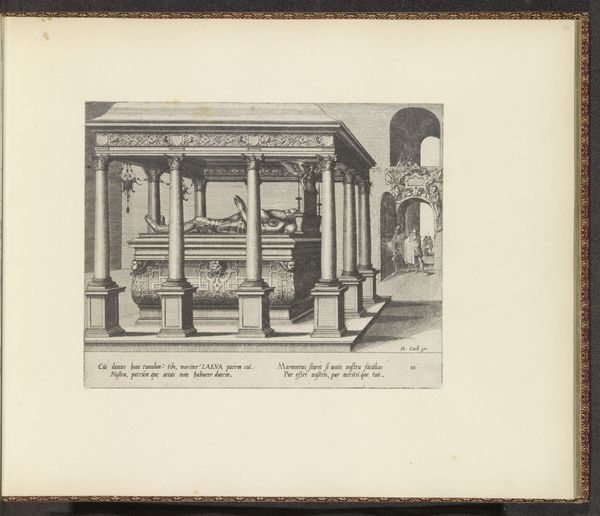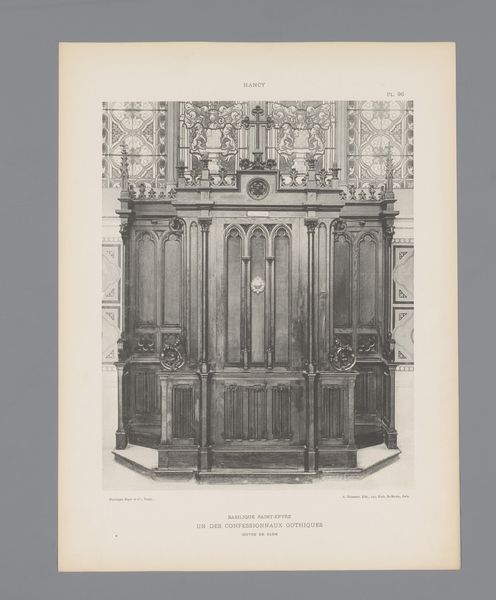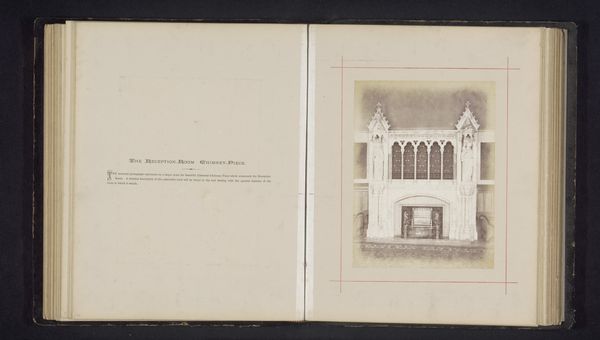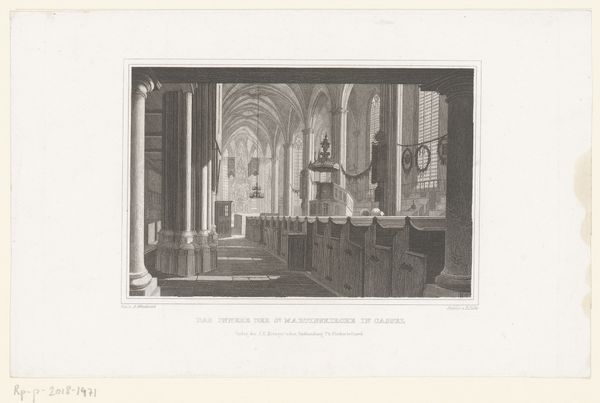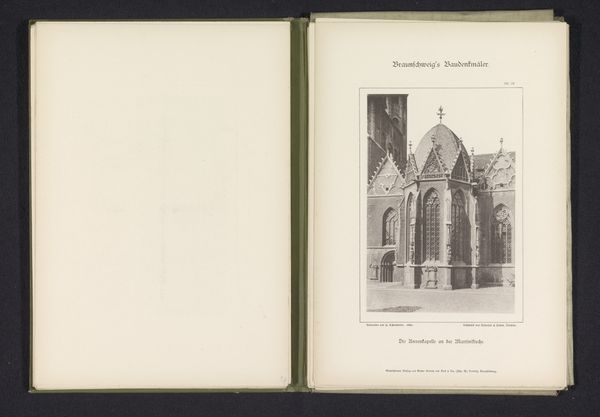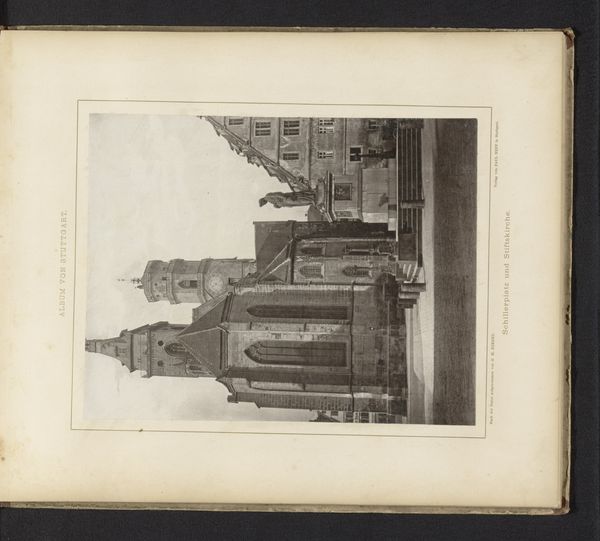
print, photography
# print
#
photography
#
genre-painting
#
realism
Dimensions: height 158 mm, width 229 mm, height 215 mm, width 280 mm
Copyright: Rijks Museum: Open Domain
Curator: Looking at "Koorbanken in de Martinikerk te Bolsward," taken in 1879 by the Gebroeders Cordes, what’s your immediate reaction? Editor: My eye is immediately drawn to the intricate woodworking and overall somber mood conveyed through the sepia tones; there's an almost meditative quality to the piece. Curator: Yes, the visual weight of the repeating gothic arches certainly contributes. Note how the photographer uses a relatively shallow depth of field to subtly flatten the space, directing our gaze deliberately across the textured surface of the choir stalls. Editor: Precisely, and contextually, photographs of this kind often served as documentation of important cultural heritage sites. This image reveals much about the church's status as a community centerpiece and the historical importance of religious institutions. Curator: Indeed, though consider how the geometric precision achieved within the print, highlighting the relationship between vertical and horizontal planes. It offers a very structured understanding, somewhat removed from the daily lived experience within that religious institution. The print's very formal aesthetic serves as its meaning here. Editor: But wasn’t the burgeoning realist movement interested in portraying unidealized images of daily life? Wouldn’t capturing something like the choir stalls of the Martinikerk fall right into that interest, providing people with insight into how places of importance looked at that time? Curator: One could argue that the subdued lighting and carefully arranged composition almost romanticize this interior, softening realism’s potentially stark edge. But it offers an aesthetic encounter first and foremost, where we reflect upon the relationships between line, tone and texture and their symbolic potential to speak to grander spiritual architectures. Editor: So, rather than seeing it as a snapshot of reality, we can appreciate how cultural objects and realist sensibilities were framed in late 19th century photography, highlighting its function within a visual and social landscape. Curator: Precisely! An insight, perhaps, that moves us closer to an enriched comprehension of this compelling image. Editor: It highlights the many layers of looking at a photograph that seems so simple.
Comments
No comments
Be the first to comment and join the conversation on the ultimate creative platform.

